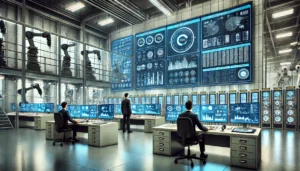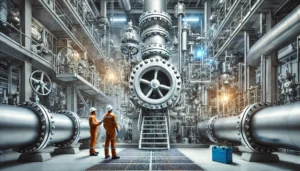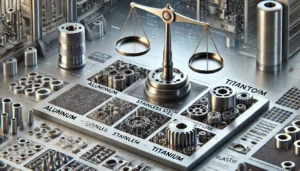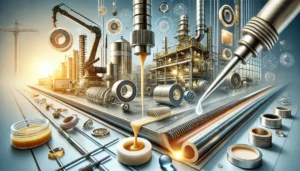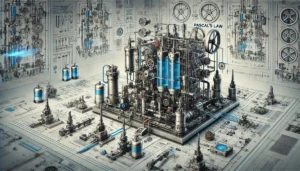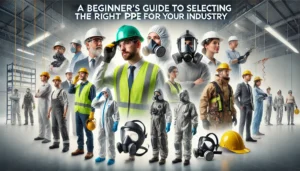I’m not sure whether you knew, but industrial automation is not quite about replacing human workers with robots. An Industrial Automation System is a union of intellect, efficiency, and innovation.
In the modern world of industry, process automation is at the center of it all and has changed everything with how industries function. It is a change in the manner in which production lines and operational processes are carried out. This encompasses the employment of various control systems like computers or robots which are operated alongside industrial processes and machinery. The goal is to achieve a higher level of productivity, quality, and consistency.
This advancement has brought Induskart, a forerunner in industrial supply, To the forefront of this transformation. Induskart empowers industries throughout India with a fully stocked range of automation equipment and gadgets to automate the future. From basic sensors, sophisticated control systems, and everything in between, Induskart caters to all automation requirements ensuring that it remains at the core of automation.
Understanding Industrial Process Automation
Industrial process automation is a field that is ever changing. It broadly means technologically automating various industrial processes. This entails using numerous types of machines and control systems to execute processes that were previously accomplished by people. The focus is improving efficiency, minimizing errors, and providing smoother operations.
The Evolution of Automation
The history of industrial automation started with simple devices that performed stand-alone tasks. Over time, the components became subsystems with sophisticated software integrating advanced technology and machinery into a single, comprehensive network, resulting in advanced industrial automation systems. Improvement in the computing world, robotics, and artificial intelligence have continuously contributed to this progress. Automation has transformed throughout periods. It can be seen as from steam engines in the Industrial Revolution to now having smart factories. Automation has greatly changed throughout history, continuously transforming the face of industries.
Current Trends in Automation
The Industrial Automation has key defining traits:
- Smart Manufacturing: Shift of traditional devices and machinery into smarter, IoT (Internet of Things) enabled machines.
- Robotics and AI: The employment of robots and AI programs to do manufacturing processes is greatly increasing due to proficient and effective output.
- Data Analytics: Utilizing analytics and big data to manage workflows, structure, and maintain proper upkeep within the equipment offset the need for manually scheduled devices.
- Human Machine Interaction: There is a growing effort in the development of systems that humans and machines can operate in unison.
These trends are evidence of the automations changes in industrial automation, as new ideas are consistently emerging. This is where Induskart comes into the picture, acting sully in this industry and providing equipment and tools, thus acting as an enabler for those businesses that want to remodel their operations.
Key Components of Industrial Automation
Industrial automation consists of several basic components, and these variety of elements are crucial in every framework of automated systems. Below is a short list of primary building blocks:
- Sensors: These are an essential component to automotive systems operations. Sensors capture and check movement, temperature, pressure, etc, which are crucial for advanced control systems.
- Controllers: As the name suggests, these are the controllers of automation systems. Controllers issue orders to other system components in response to changes in the process or the system. They also give commands based on the information received from devices that monitor the automated system operations.
- Actuators: Actuators are the doers in automation systems. They convert the controller’s commands into physical movement or action, such as opening a valve or starting a motor.
- Human-Machine Interface (HMI): An HMI allows a human operator to interface with an automation system in a helpful manner and monitor and control processes with ease.
Induskart has on offer some of the cheapest components intended to cater to multifunctional industrial automation. Induskart has on offer sophisticated controllers for complex processes and advanced sensors for precision measurements. Induskart ensures that industries have access to the best automation tools.
Benefits of Industrial Automation
The first step towards achieving astounding improvement to the overall productivity, as well as the efficiency of processes, is installing an industrial automation system.
- Improved Efficiency and Productivity: Added accuracy to your production indicators is one invaluable treasure that an Automation system will bring you. It ensures uninterrupted production runs, improved resource utilization, amplified output levels, and horizon expansion beyond date. Unlike humans, machines never tire.
- Enhanced Safety and Quality: Because automation takes over, the chances of accidents occurring is way down as there is less human involvement in engaging deadly machines and hazardous working environments. Merchandise of superior characteristic is guaranteed, as are repetitive activities done by machines as opposed to people.
- Cost-effectiveness: Yes, savings. While the first stage of implementing an automation system could seem to be a good chunk difference from your budget, in the long run it works out for the best in remarkable savings, lowered costs in wages, waste reduction, and higher yield.Resources. These savings eventually impact the cost value greatly.
Implementing Automation in Your Business
Automating processes is an effective way to modernize your business. Here are some steps to get you started:
- Initial Assessment and Planning: Start by evaluating your current processes. Identify areas where automation can bring the most benefit, such as repetitive tasks or operations requiring high precision. Set clear objectives for what you want to achieve with automation.
- Choosing the Right Tools and Equipment: Selecting the appropriate components is crucial. Consider factors like compatibility with existing systems, scalability, and ease of integration. Think about the long-term needs of your business to ensure the technology you invest in can evolve with your operations.
- Induskart’s Support: Induskart can play a vital role in this transition. With their vast array of industrial automation components and expert advice, they can help you choose the right tools for your specific needs. Induskart’s extensive experience and technical support ensure that you make informed decisions, making the implementation process smoother and more efficient.
Challenges and Solutions in Automation
As with any advanced technology, automation comes with its unique challenges, but with the right solutions, such hurdles can be easily overcome. These challenges include:
- Integration with Existing Systems: Updating or implementing automation solutions usually comes with integrating new systems and troubleshooting old ones. This is not only tedious, but also needs skilled professionals.
- Skills and Training: With every new system comes the challenge of adapting new skills to fully utilize its potential. In this case, training and development become imperative.
- Solution Strategy with Induskart: Overcome these hurdles using Induskart’s resources as they can provide deep insights regarding proper integration with suggested training tools and additional automated resources. These factors help develop proper strategies alongside adding well-suited pieces for pre-existing checklists. Induskart’s extensive product catalog ensures all components needed for smooth integration are readily available.
With the help of Induskart, overcoming these challenges, organizations attempt to reap rewards in industrial automation ease justification.
The Future of Industrial Automation
The evolution of industrial automation will be positively impacted by vast emerging technologies such as AI, IoT, and advanced robotics. The future of these ideas significantly increases the precision and efficiency of robotic processes, making them faster and much more adaptable. With the added intelligence offered by inter-communication, the potential innovations and advancements in production lines are unfathomable.
Conclusion
While reviewing industrial process automation, we have covered everything from its parts, advantages, and strategies to its hurdles, all while explaining Induskart’s important role in the automation evolution. As you can tell, there is quite a shift happening in the industry. Induskart is always available to help, whether you are trying to set up automation for the first time or trying to enhance existing systems, thanks to their extensive knowledge and products. Don’t wait – visit Induskart and step into the exciting world of industrial automation.


